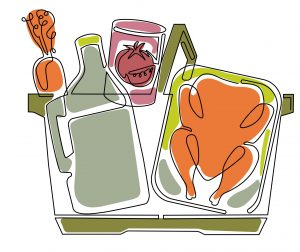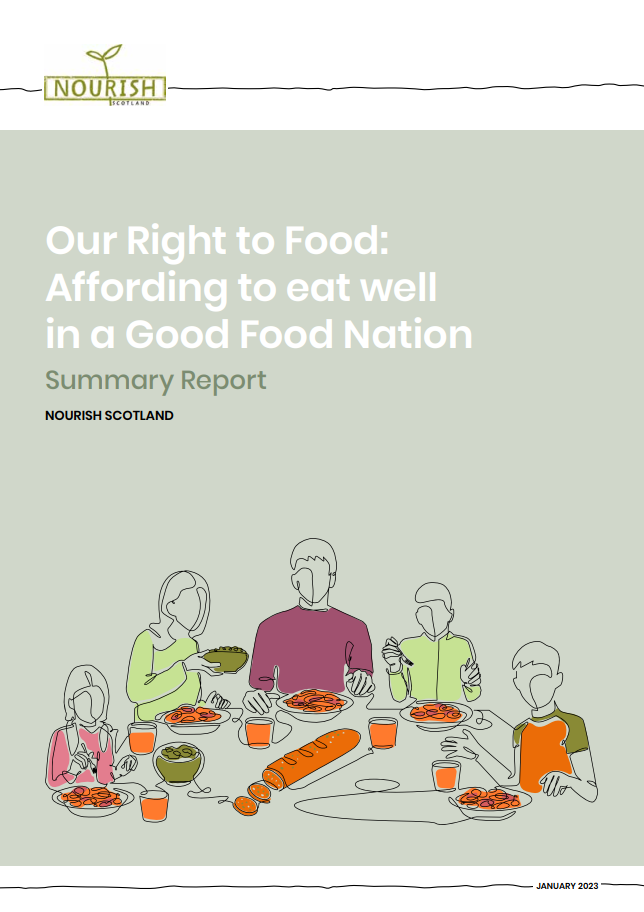Our Right to Food
Overview
This project helps us understand what the right to food looks like for families living in Scotland, and how we’ll know if we’re making progress. It starts by exploring what people in Scotland would choose as a healthy and enjoyable way to eat so that rights holders and decision makers can better identify how to make this accessible for all.
In 2021, we worked with groups of Community Advisors to explore what families in Scotland today would choose to eat if income from work and benefits was sufficient. Together, we co-created weekly shopping lists that take into account the realities of people’s lives and preferences, while aiming for a ‘good enough’ fit with current dietary recommendations. These shopping lists are based on detailed work to imagine four case study families and are tools for measuring progress locally and nationally.
In 2022, we are working with partners across Scotland to explore, compare and make sense of how the availability and price of these foods differ within and between local authority areas. For more information or to get involved, read on below.
Our Vision
A Scotland where everyone can afford the food that keeps them healthy and well.
Everyone should be able to afford the food that keeps them healthy and well, but this does not mean that food should be cheap. It means wages and benefits should be high enough that people can choose the food that helps everyone in the family live a healthy life, without having to sacrifice on other basic needs like heating.
So, if it’s not just about food prices, then how will we know what to do?
Local and national governments already make many decisions that affect how easy or difficult it is for people to afford the food they need. This project will help us understand what decision makers can do to ensure that everyone can afford the foods that keep them healthy and well. For example, the Scottish Child Payment means that eligible families can access £80 every four weeks to help with the costs of raising a child, and Best Start Foods helps eligible families buy healthy foods for children under three. At local level, things like reliable public transport and decisions about where shops are located can determine whether someone is able to afford a variety of healthy foods or be left with no choice but to eat less nutritious food that can be accessed nearby.
By working with rights holders across Scotland, we are developing shared ways to measure the progress these decisions make.
